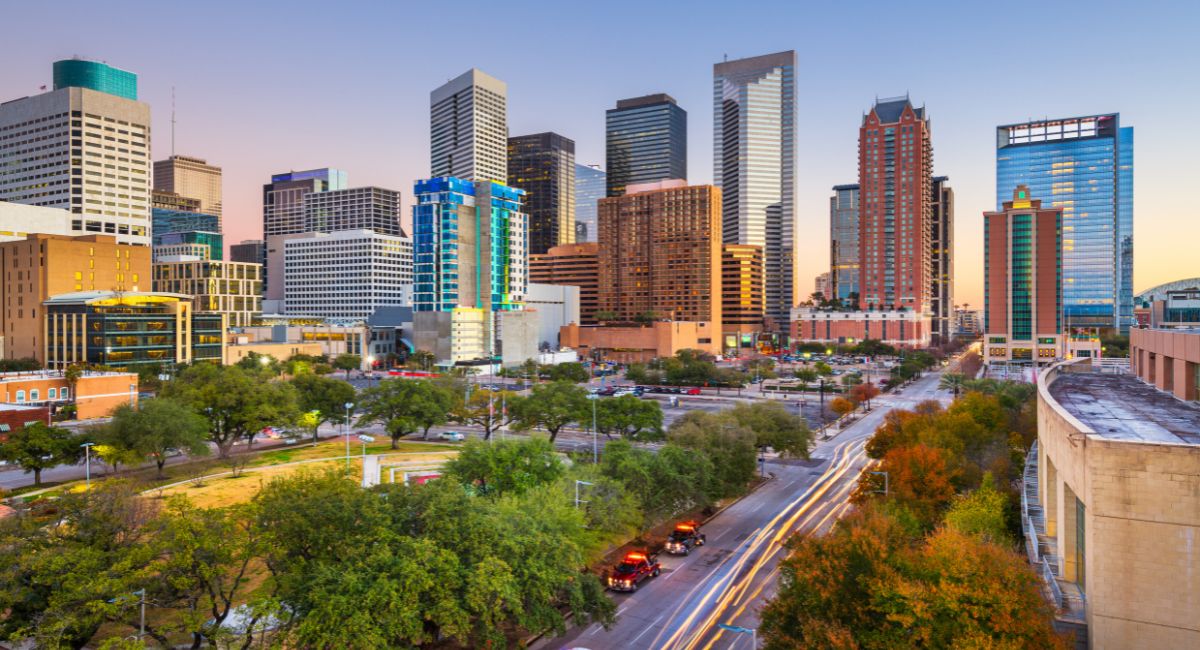Houston has become the most diverse city in an ever-diversifying nation, a new Migration Policy Institute report finds.
At a Wed., November 15 Houston Ethnic Media Services briefing, MPI Senior Policy Analyst Valerie Lacarte, who lead-authored the report, shared three key findings about increased diversification of the immigrant community itself, the integration of this community into the city’s social fabric, and barriers to integration including complex legal statuses.
A diversifying immigrant community
MPI published the November 2023 report — its third on Houston, which was also found to be the most diverse U.S. city in 2021 — to see how recent arrivals to Houston over recent years “have affected the dynamics of the immigrant community already there,” said Lacarte. “We found that as the Houston immigrant community grew over time, it has also diversified.”
Between 2010 and 2021, when the city’s immigrant community grew by 32% — double the U.S. growth rate — the non-Mexican share of immigrants also grew significantly, from 54% to 63%. Top countries of origin for communities with over 30,000 people include Venezuela, Nigeria, India, Honduras, Guatemala, China, Pakistan and Cuba.
Integration in society and the workforce
As these communities have grown, they have also become increasingly integral to Houston’s social fabric.
The report found that 30% of the city’s labor force is foreign-born, with far higher shares in some major industries like construction (nearly half), accommodation including food and services (37%), and manufacturing (34%).
A major indicator of this integration is homeownership, of which naturalized citizens display even higher levels than U.S.-born individuals, Lacarte explained, and “we were surprised to see that even a significant share of undocumented immigrants were homeowners as well.”
Another indicator of high integration is family composition, she continued: in Houston, 48% of youth under 18 who live with a parent have an immigrant parent.
Nevertheless, barriers to integration remain, most persistently in the form of limited English proficiency, which correlates to lower incomes and later naturalization among immigrants.
The report found that 67,000 of Houston immigrants are underemployed, i.e. college graduates who are either not working or working in low-skilled jobs. An estimated 360,000 immigrants are eligible to naturalize in Houston, with 40% of these having been living in the U.S. for at least 20 years.
“Time in the U.S. doesn’t necessarily eliminate” these income and language barriers for many facing them, Lacarte said, often because immigrants who face the most difficulty tend to be older adults having less opportunity with income and language access, which are crucial to navigating naturalization and other legal statuses.
Complex legal statuses
As Houston diversifies, these legal statuses become increasingly complex.
The report found that 68% of the city’s immigrants have some form of legal status — either as citizens, or through a green card or visa — but an increasing number of these immigrants are falling into a liminal category of “twilight statuses,” as people with a temporary status “which may provide some work authorization and benefits, but which have an uncertain future,” Lacarte said.
The immigrants holding these twilight statuses tend to be “recent border arrivals and humanitarian populations” like refugees, asylum seekers, unaccompanied children, DACA holders, parolees and special immigrant visa holders, she continued.
She suggested that Houston’s thriving economy, housing market, and immigrant-friendly local political messaging were key factors attracting migrants seeking legal protection.
The extent of its draw was surprising: the report found that Harris County, where the city is located, has been the top county for unaccompanied children since 2014, while Houston itself has been the top U.S. city for receiving Afghan parolees.
As the country as a whole diversifies, “of course you would expect more diversity in Houston,” Lacarte said. “But what’s most interesting is the extent to which Houston is reflecting trends we’re seeing at the national level, and what we’re seeing is high levels of integration — particularly with youth, where nearly half have an immigrant parent — and the main barrier to integration is language. To look at Houston is to see where our country is going, and to learn how we can best support our populations.”




